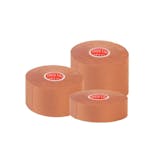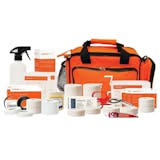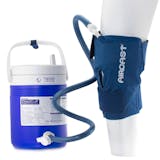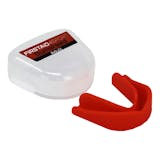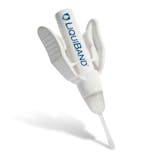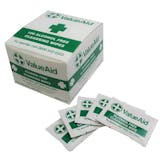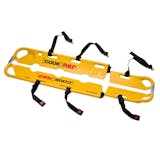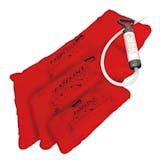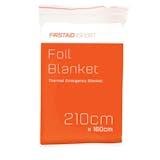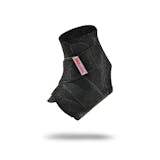Ligaments v Tendon Injuries
How do you know if you have damaged your ligament or your tendon?
Well to be honest the reason there is such a confusing overlap of what is what and where, is because the two are very alike. The simplest way to put it is that tendons attach muscle to bone and ligaments attach bone to bone. Sounds simple enough right? Well, the problem most people have is distinguishing between a ligament injury and a tendon injury due to their symptoms being very alike. So in order to understand them a little better know how to treat the things, we need to delve a little deeper... Another reason these two get so mixed up is that both tendons and ligaments are made up of connective tissue called collagen fibres. However, how this collagen is formed together in very different ways. In a tendon the fibres are parallel, allowing for more elasticity which if you think about the way muscles work and the amount of movement involved, this makes them more suited to connecting the muscle to the bone. The fibres in ligaments however criss-cross to keep the ligament stable and ultimately to support, stabilise and strengthen the bone joints.Ligament Injuries
Although ligaments are strong and rigid by nature, strains and sudden forces can cause them to rupture and tear which is a common sports injury. Damage is caused when the fibres become torn and the severity depends on the extent to which they have torn and the pain experienced as a result. Because of the lack of blood supply to the tissue, sometimes tears become permanent which can end in their removal. Also, if a ligament is stretched past a certain point, it can result in the ligament never returning to its original state. Anterior Cruciate Ligament (ACL) tears are the most common sports-related injury to the ligament. The ACL is found in the knee and is crucial for stability and therefore if torn, surgery may be required to correct the injury. The symptoms of an ACL injury are the feeling of your leg ‘giving-way’ followed by pain and swelling in the knee. Like with any potential ligament injury, If you feel you may have torn or damaged your ACL, it is crucial that you visit your doctor to confirm the injury and to rule out any other problems. Sometimes tears to the ACL do not always require surgical treatment however an untreated injury may result in further damage. These injuries are common in athletes, especially in sports such as football, rugby, hockey and basketball due to the high level of strain put on the knee through pivoting and lateral or twisting movements in the legs. These injuries can be prevented or treated with Knee Braces & Supports, however for sports with the potential for high impact on the knee, a high supporting brace such as the Donjoy Armour With Fourcepoint Knee Brace may be required.
Anterior Cruciate Ligament (ACL) tears are the most common sports-related injury to the ligament. The ACL is found in the knee and is crucial for stability and therefore if torn, surgery may be required to correct the injury. The symptoms of an ACL injury are the feeling of your leg ‘giving-way’ followed by pain and swelling in the knee. Like with any potential ligament injury, If you feel you may have torn or damaged your ACL, it is crucial that you visit your doctor to confirm the injury and to rule out any other problems. Sometimes tears to the ACL do not always require surgical treatment however an untreated injury may result in further damage. These injuries are common in athletes, especially in sports such as football, rugby, hockey and basketball due to the high level of strain put on the knee through pivoting and lateral or twisting movements in the legs. These injuries can be prevented or treated with Knee Braces & Supports, however for sports with the potential for high impact on the knee, a high supporting brace such as the Donjoy Armour With Fourcepoint Knee Brace may be required.
Tendon Injuries
Like with ligaments, tendons can become damaged and even snap if over strained. A partially torn tendon can cause swelling and discomfort but can be healed over time, whereas a clean break in a tendon can cause a complete loss of movement and may result in permanent damage. The best treatment for an injured tendon would be to initially use an Ice Pack to reduce the swelling whilst keeping the injured area elevated. More serious damage or tears may require a Splint in order to aid the healing process, as well as Taping & Strapping to help stabilise the area. In order to prevent damage to tendons, Supports & Braces can be used in order to give support to a vulnerable area as well as offering relief from an ongoing injury. One of the most common tendon injuries in athletes is damage to the Achilles Tendon which connects the heel to the muscle in your lower leg and is caused by over strain or improper footwear. In order to prevent injury to this area, is to ensure that you warm up sufficiently before any vigorous sporting activity and also wearing supports which are specifically designed for that area. Tendonitis is also a common injury in which involves the inflammation and swelling of a tendon resulting in pain and stiffness. This type of injury again can be caused through over straining of the tendon through sport and physical activity. Although an MRI or X-ray can confirm swelling of the tendon, a doctor can usually diagnose tendonitis without. Again, at the first signs of an inflamed tendon, an Ice Pack should be used to reduce the swelling and all physical activity should be stopped.
Tendonitis is also a common injury in which involves the inflammation and swelling of a tendon resulting in pain and stiffness. This type of injury again can be caused through over straining of the tendon through sport and physical activity. Although an MRI or X-ray can confirm swelling of the tendon, a doctor can usually diagnose tendonitis without. Again, at the first signs of an inflamed tendon, an Ice Pack should be used to reduce the swelling and all physical activity should be stopped.


